 |
 UKRAINE
UKRAINE
On this pageChornobyl Nuclear Power Plant
Khmelnytskyy Nuclear Power Plant
Rivne Nuclear Power Plant
South Ukraine Nuclear Power Plant
Zaporizhzhya Nuclear Power Plant
International Chornobyl Center for Nuclear Safety, Radioactive Waste and Radioecology
Country Profile SynopsisSize: 233,090 square miles (slightly smaller than Texas)Population1: 49.8 million (1999 est.) Gross Domestic Product1: $108.5 billion (1998) (purchasing power parity) Gross Domestic Product per Capita: $2,200 (1998) Electricity Production1: 157.9 billion kWh (1998)
|
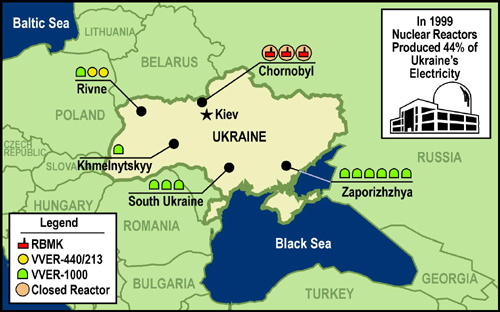
Ukraine's Nuclear Power Program
As of 2001, Ukraine has 13 nuclear power reactors in operation at four plants. In addition, two units are under construction at Khmelnytskyy and Rivne. In 1999, Ukraine's nuclear power plants produced 44 percent of the country's electricity.
Ukraine has 13 operating pressurized light-water reactors (11 VVER-1000s and two VVER-440/213s). The country's final RBMK reactor, Chornobyl Unit 3, was shut down on December 15, 2000. The Chornobyl Unit 4 accident in 1986 focused international attention on the safety of Soviet-designed reactors, particularly the RBMK design. At Chornobyl, DOE completed projects to upgrade equipment and safety procedures at Unit 3 (when it was operating) and to rehabilitate and make the working conditions safer in the Shelter, which contains the destroyed Unit 4. DOE also provides support for the development of the International Chornobyl Center of Nuclear Safety, Radioactive Waste and Radioecology.
Ukraine's Key Nuclear Organizations
-
Ministry of Ecology and Natural Resources of Ukraine - agency responsible for implementing Ukrainian policy on environmental protection and for protecting the population from activities that are potentially damaging to the environment. Also is the parent organization of the Ukrainian Nuclear Regulatory Department.
-
Nuclear Regulatory Department - Ukrainian nuclear regulatory authority.
-
Energoatom - utility under the Ministry of Energy responsible for all of Ukraine's nuclear power plants.
-
Ukraine Academy of Sciences - parent organization of many scientific and technical institutes with nuclear-related functions.
-
International Chornobyl Center for Nuclear Safety, Radioactive Waste and Radioecology Kyiv, Ukraine - research center and technical support organization for nuclear safety and decommissioning activities for Chornobyl nuclear power plant and Chornobyl Shelter, as well as for other nuclear power plants in Ukraine.
- Slavutych Laboratory for International Research and Technology - primary technical branch of the International Chornobyl Center.
Chornobyl Unit 3 Shut Down in 2000
In June 2000, President Clinton visited Ukraine and reaffirmed the U.S. commitment to see the Chornobyl plant shut down. Ukraine President Kuchma had received the recommendation of a government commission and announced that Unit 3 at the Chornobyl nuclear power plant would be shut down by December 15, 2000. President Clinton announced during the visit that the U.S. would allocate an additional $2 million in aid to improve safety at Ukraine nuclear power plants and pledged $78 million to the Chornobyl Shelter Fund in a pledging conference that was scheduled for Berlin in July 2000. These figures are in addition to the $263 million authorized by the United States through FY 1999 for technical assistance to Ukraine.
Numerous safety problems at Chornobyl led to the international community's
call for complete and permanent closure of Chornobyl Unit 3, which was accomplished on December 15, 2000. The United States
continues to support Ukraine in its efforts to minimize impacts from
the shutdown of the Chornobyl plant. Such support will include assisting in
the construction of a heat plant, assisting in the efforts to stabilize the
Shelter, and supporting the International Chornobyl Center in Slavutych in developing
capabilities in nuclear reactor safety analysis and other technologies related
to safe and efficient reactor operation.
Chornobyl Nuclear Power Plant
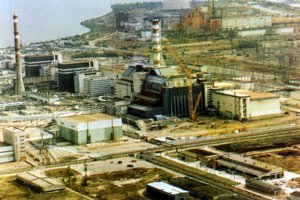
Plant Manager: Vitaliy Tolstonogov
Chief Engineer: Yuri Neretin
Utility: Energoatom
Telephone No.: 380-4493-4-3350 or 380-44-224-11-66
Fax: 380-44-79-25670
| Unit | Reactor Model |
Net Output |
Initial Start |
Status |
|---|---|---|---|---|
| 1 | RBMK- 1000 |
925 MWe | 8/1977 | Shut Down 11/1996 |
| 2 | RBMK- 1000 |
950 MWe | 5/1979 | Shut Down 10/1991 |
| 3 | RBMK- 1000 |
925 MWe | 6/1981 | Shut Down 12/2000 |
| 4 | RBMK- 1000 |
950 MWe | 4/1984 | Destroyed 4/1986 |
Scope and Status of Activities
DOE efforts at the Chornobyl plant cover a broad range of activities. The now-completed projects improved safety of day-to-day operations and upgraded critical plant safety systems. Projects included improvements in operator training (1997-1999); development of improved operating procedures and practices (1995-1998); development of emergency operating instructions (1995-1998); provision of an analytical simulator (1995-1998); provision of fire-fighting and fire-prevention material and equipment (1995-1999); and provision of a safety parameter display system (1996-1998).
Accomplishments
Management and Operational Safety-
Improved management and operational control procedures were implemented at Unit 3.
-
All symptom-based emergency operating instructions that promote safety through improved accident mitigation strategies were implemented at Unit 3.
-
Quality assurance upgrades for the plant were provided, including three seminars on quality in maintenance; three Chornobyl staff members were trained on conduct of internal quality assurance audits.
-
Operator exchanges that trained plant personnel to develop improved operating safety procedures and practices were completed.
-
An analytical simulator for Unit 3 was completed in February 1998.
-
Basic equipment was provided for the development and support of training at the plant. This equipment included personal computers, AutoCAD workstations, software, printers, scanners, overhead projectors and screens, office furniture, a photocopier, whiteboards, and various consumables and office supplies.
-
Workshops on the Systematic Approach to Training methodology were conducted for Chornobyl management and training personnel. Instructor skills' training was provided to assist Chornobyl training personnel in improving instruction techniques.
-
Radiation protection and control room operator pilot training courses were developed and implemented at the plant using the Systematic Approach to Training methodology.
-
Valve-seat resurfacing equipment, a pipe lathe/weld-preparation machine, a vibration monitoring and shaft alignment system, and an electrical fault detection thermography camera for improving safety maintenance activities at Unit 3 were provided. Training on use of this equipment was completed by U.S. specialists.
- Procedures were developed for management assessments, independent audits, and document control.
Engineering and Technology Upgrades
-
Fire protection equipment was provided to the plant. This equipment included protective clothing, hose nozzles, hand-held fire extinguishers, penetration sealant material, structural steel coating material, a fire-detection and alarm system, self-contained breathing apparatus (including an air-compressor), fire doors, and a portable radio system for the fire brigade.
-
Two advanced ultrasonic flaw detectors were delivered to Unit 3; plant personnel were trained in their use.
-
A safety parameter display system was installed, tested, and was operational at Unit 3.
-
The Comprehensive Engineering and Radiation Survey of Unit 1 was completed.
- The plan for the Comprehensive Engineering and Radiation Survey of Unit 2 was developed and approved by plant management.
Khmelnytskyy Nuclear Power Plant
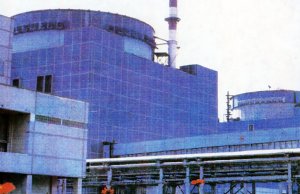
Plant Manager: Yuriy Nedashkovsky
Chief Engineer: Volodymyr Sofiyuk
Utility: Energoatom
Telephone No.: 380-3848-33350
Fax: 380-3848-33360
| Unit | Reactor Model |
Net Output |
Initial Start |
Status |
|---|---|---|---|---|
| 1 | VVER- 1000 |
950 MWe | 12/1987 | Operating |
| 2 | VVER- 1000 |
950 MWe | Under Construction | |
| 3 | VVER- 1000 |
950 MWe | Under Construction | |
| 4 | VVER- 1000 |
950 MWe | Under Construction | |
Scope and Status of Activities
At the Khmelnytskyy plant, DOE's efforts have focused mainly on establishing the Khmelnytskyy Training Center, a fully equipped training facility at which operators from other Ukrainian reactors can be trained in the Systematic Approach to Training methodology (1993-1998). A full-scope simulator to enhance the effectiveness of operator training also was provided as part of this effort.
Job-specific and general safety-related courses were developed for use at the Khmelnytskyy Training Center and at other Ukrainian nuclear plants (1993-1998). Other major projects focus on developing improved operating procedures and practices (1996-2004) and providing a safety parameter display system (1996-1999). Other projects support in?depth safety assessments (1998-2003) and provision of nondestructive examination equipment (1997-1998).
Accomplishments
Management and Operational Safety-
A full-scope simulator was installed at the plant in December 1997; the simulator is now in use for training plant operators.
-
Basic equipment was provided for the development and support of the Khmelnytskyy Training Center. This equipment included computers, scanners, printers, photocopiers, fax machines, office furniture, whiteboards, overhead projectors, projector screens, and various consumables and office supplies.
-
A fully equipped nuclear power plant training center was established at the plant. To date, more than 2,000 personnel have taken courses at the training center.
-
Operator exchanges that trained plant personnel to develop improved operating safety procedures and practices were completed.
-
Training specialists from the Khmelnytskyy Training Center, working with U.S. specialists, developed and conducted eight planned job-specific maintenance and operating courses and four planned general courses on nuclear safety-related topics.
-
To complement the eight job-specific maintenance and operation training courses, course-specific equipment was provided to the plant. This equipment included soldering stations, a refueling simulator with video simulation capabilities, water chemistry equipment, and AutoCAD workstations.
-
The mechanical maintenance, motor-operated valve repair course was developed at the Khmelnytskyy Training Center and transferred for use at the Balakovo Training Center.
-
Plant managers attended workshops to familiarize themselves with the elements of the Ukraine national standard for quality assurance. Administrative and management changes were started to implement the standard at Khmelnytskyy.
- Computer equipment was installed to support development and pilot implementation of the Ukraine Reliability Database at Khmelnytskyy.
Engineering and Technology Upgrades
-
A safety parameter display system was installed, tested, and placed in operation at the plant.
- Two advanced ultrasonic flaw detectors were delivered to the plant.
Plant Safety Evaluations
-
An in-depth safety assessment for Unit 1 was initiated, and data collection and system design documentation tasks were begun. Computer equipment for the in-depth safety assessment work was installed at the plant.
-
Technical transfer training was provided in the areas of thermal-hydraulic analysis, containment analysis, radiological inventory, and probabilistic risk assessment.
- Safety computer codes were transferred to the Ukrainian project staff: RELAP5 (thermal-hydraulic), CONTAIN (containment), MELCOR (containment), ORIGEN (radiological inventory), and SAPHIRE (probability).
Rivne Nuclear Power Plant
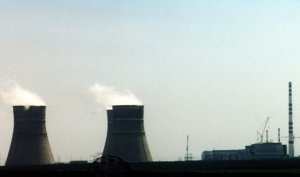
Plant Manager: Volodymyr Korovkin
Chief Engineer: Mykhailo Kolisnychenko
Utility: Energoatom
Telephone No.: 380-3636-22360
Fax: 380-3636-22314
| Unit | Reactor Model |
Net Output |
Initial Start |
Status |
|---|---|---|---|---|
| 1 | VVER- 440/213 |
361 MWe | 12/1980 | Operating |
| 2 | VVER- 440/213 |
384 MWe | 12/1981 | Operating |
| 3 | VVER- 1000 |
950 MWe | 11/1986 | Operating |
| 4 | VVER- 1000 |
950 MWe | Under Construction | |
Scope and Status of Activities
At Rivne nuclear power plant, DOE projects include developing emergency operating instructions (1993-1998), improving operator training (1997-2002), and performing in-depth safety assessments (1997-2005).
Accomplishments
Management and Operational Safety-
Emergency operating instructions that promote safety through improved accident mitigation strategies for VVER-440/213 units were developed. Analysis for validating these instructions is under way.
-
Operator exchanges that trained plant personnel to develop improved operating safety procedures and practices were completed.
-
The Preliminary Design Specification (PDS), Interim Design Specification (IDS) and control panels for the Rivne Unit 3 full-scope simulator were completed. The project is scheduled for completion during 2001. Key components (e.g., computer platform, control panel, input-output control devices) were delivered for the VVER-1000 full-scope simulator at Unit 3.
-
Work is under way to develop a full-scope simulator for Rivne Unit 2. A team of Ukrainian specialists is working with U.S. vendor GSE Power Systems to develop this simulator, which is scheduled for completion in 2002.
-
The transfer of the Systematic Approach to Training methodology and materials developed at the Khmelnytskyy Training Center to the Rivne plant continues. Pilot training courses for the Instrumentation and Control Technician, Unit Shift Supervisor, and Control Room Reactor Operator positions were developed and implemented.
-
To complement the pilot training course on instrumentation and control for pressure transmitters, pressure calibration course-specific equipment was provided to the plant. Basic equipment, including a computer with network capabilities, a printer, and associated consumables, was provided for the development and support of training.
-
Three Rivne staff members were trained to conduct internal quality assurance audits. Plant managers attended workshops reviewing plant and Energoatom activities to implement the Ukraine national standard for quality assurance at nuclear facilities.
- An audit was completed of nuclear fuel handling at Rivne.
Engineering and Technology Upgrades
-
Six advanced ultrasonic flaw detectors were delivered to the plant.
- A safety parameter display system was installed in Unit 3. Pilot plant operation was initiated in early 2000.
Plant Safety Evaluations
-
Computer equipment for the in-depth safety assessment work was installed at the plant.
-
The in-depth safety assessment for Unit 1 was initiated. Contracts were awarded for planning, development of project guidelines, an internal-event probabilistic risk assessment, and a deterministic risk assessment.
-
Technical transfer training was provided in the areas of thermal-hydraulic analysis, containment analysis, radiological inventory, and probabilistic risk assessment.
-
Safety computer codes were transferred to the Ukrainian project staff: RELAP5 (thermal-hydraulic), CONTAIN (containment), MELCOR (containment), ORIGEN (radiological inventory), and SAPHIRE (probability).
-
Documentation of previous probabilistic risk assessment work was completed. Data collection, system documentation, a baseline thermohydraulics model, fault-tree models, and event-tree models were completed.
-
Design basis accident analysis and probabilistic risk assessment Level 1 analysis began. These analyses are past the 50 percent completion level.
- Data collection began for internal hazards (fire and flood) and external hazards (fire, flood, seismic, and other).
South Ukraine Nuclear Power Plant

Plant Manager: Borys Bilyk
Chief Engineer: Vladimir Zaplatin
Utility: Energoatom
Telephone No.: 380-5136-24988 or 380-5136-27660
Fax: 380-44-227-26-61 or 380-482-232426
| Unit | Reactor Model |
Net Output |
Initial Start |
Status |
|---|---|---|---|---|
| 1 | VVER- 1000 |
950 MWe | 12/1982 | Operating |
| 2 | VVER- 1000 |
950 MWe | 12/1984 | Operating |
| 3 | VVER- 1000 |
950 MWe | 9/1989 | Operating |
| 4 | VVER- 1000 |
950 MWe | Cancelled | |
Scope and Status of Activities
DOE projects at South Ukraine nuclear power plant have supported development of full-scope simulators to enhance operator training (1995-2001). In addition, in-depth safety assessments are under way (1995-2000), and safety parameter display systems are being provided (1996-2001).
Accomplishments
Management and Operational Safety-
A full-scope simulator for Unit 1 is being developed in Ukraine. The interim design specifications for this simulator were completed. The control panels were installed and acceptance testing has started. The project is scheduled for completion during 2001.
-
Operator exchanges that trained plant personnel to develop improved operating safety procedures and practices were completed.
-
The transfer of the Systematic Approach to Training methodology and materials developed at the Khmelnytskyy Training Center to the South Ukraine plant was completed. Pilot training courses for the Instrumentation and Control Technician Unit Shift Supervisor and Control Room Reactor Operator positions were developed and implemented.
-
To complement the pilot training course on instrumentation and control for soldering, soldering equipment was purchased for the plant. Basic equipment, including a computer with network capabilities, a printer, and associated consumables, was provided for the development and support of training.
-
A full-scope simulator for Unit 3 was completed in May 2000.
-
A South Ukraine staff member was trained to conduct internal quality assurance audits. Plant managers attended workshops reviewing plant and Energoatom activities to implement the Ukraine national standard for quality assurance at nuclear facilities.
-
An audit of environmental radiation monitoring and related laboratory activities was completed.
- South Ukraine staff were trained on the development of Westinghouse-based EOIs.
Engineering and Technology Upgrades
-
Six advanced ultrasonic flaw detectors were delivered to the plant.
- Safety parameter display systems were installed, tested, and are now in operation at Units 1 and 2. The system at Unit 3 was installed. Testing will be completed before the end of 2000.
Plant Safety Evaluations
-
The in-depth safety assessment for Unit 1 is in progress. Probabilistic risk assessment project guidelines were completed for system descriptions, nuclear steam supply system database, component reliability database, abnormal events database, containment database, preliminary thermal-hydraulic models, internal-and external-event probabilistic risk assessment, deterministic safety assessment, and containment assessment. The data collection, system description documentation, and baseline thermohydraulics model were completed in 1998.
-
The Level 1 probabilistic risk assessment for internal events of South Ukraine Unit 1 was completed in 1999. In April 2000, this probabilistic risk assessment was reviewed by an IPSART Mission of the International Atomic Energy Agency. The findings of this review were generally positive. An independent peer review of the probabilistic risk assessment by an Ukrainian technical organization is in progress.
-
Work on the design basis accident analysis for Unit 1 is in progress. All the analytical models for the analysis of accident progression and the determination of containment response under accident conditions have been developed. The design basis accident sequences are being analyzed and about 70% of the overall effort has been completed.
- The first part of the external hazards (both man-made and natural phenomena) assessment and the internal hazards (fire and flooding) assessment for Unit 1 was completed in June 2000. This involved data and information collection, screening of hazards, and, where possible, the preliminary assessment of vulnerabilities and risk. The tasks needed to complete the internal/external hazards assessments were delineated and prioritized.
Zaporizhzhya Nuclear Power Plant
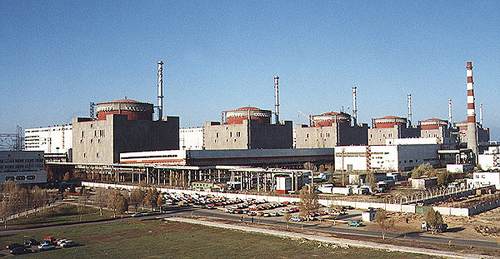
Plant Manager: Volodymyr Pyshnyi
Chief Engineer: Yuriy Kovrizhkin
Utility: Energoatom
Telephone No.: 380-6139-32451 or 380-44-212-10-41
Fax: 380-6139-31912
| Unit | Reactor Model |
Net Output |
Initial Start |
Status |
|---|---|---|---|---|
| 1 | VVER- 1000 |
950 MWe | 11/1984 | Operating |
| 2 | VVER- 1000 |
950 MWe | 6/1985 | Operating |
| 3 | VVER- 1000 |
950 MWe | 12/1986 | Operating |
| 4 | VVER- 1000 |
950 MWe | 12/1987 | Operating |
| 5 | VVER- 1000 |
950 MWe | 6/1989 | Operating |
| 6 | VVER- 1000 |
950 MWe | 10/1995 | Operating |
Scope and Status of Activities
DOE efforts at Zaporizhzhya nuclear power plant focus on improving the safety of day-to-day operations at the plant, upgrading critical plant safety systems, and ensuring adequate storage facilities for spent nuclear fuel. Projects include activities to improve operator training (1994-2003), development of improved operating procedures and practices (1993-1997), provision of fire-fighting and fire-prevention material and equipment (1993-2003), performance of in-depth safety assessments (1996-2005), and provision of a dry storage system for spent nuclear fuel (1994-2000).
Accomplishments
Management and Operational Safety-
Emergency operating instructions that promote safety through improved accident mitigation strategies were developed. Analysis for validating these instructions is under way.
-
All 16 management and operational control guidelines for preparing operational control procedures that promote safety through improved operating practices were developed; plant-specific procedures were implemented at the plant.
-
The operator exchange program, which trained plant personnel to develop improved operating safety procedures and practices, was completed.
-
A configuration management program for keeping the plant's design basis current and accurate was initiated at the plant.
-
A full-scope simulator upgrade for Unit 5 was completed in June 1999.
-
Transfer of simulator maintenance tools was completed.
-
The transfer of the Systematic Approach to Training methodology and materials developed at the Khmelnytskyy Training Center to the Zaporizhzhya plant was completed. Pilot training courses for the Chemical Operators and Water Chemistry Technicians Unit Shift Supervisor, and Control Room Reactor Operator positions were developed and implemented.
-
Simulator instructor training was initiated at the plant. Simulator instructor training was provided to simulator instructors from the Zaporizhzhya and Kozloduy plants using the Zaporizhzhya simulator.
-
Basic equipment was provided for the development and support of training. This equipment included a computer with network capabilities, a printer, and associated consumables.
-
Guidelines for plant procedures for quality assessments, document control and records management were developed and implemented during 2000. Fifteen Zaporizhzhya staff members were trained to conduct internal quality assurance audits. Zaporizhzhya managers attended workshops to familiarize themselves with plant and Energoatom activities to implement the Ukraine national standard for quality assurance at nuclear facilities.
-
Procedures were developed for pilot implementation of an event analysis, reporting and lessons learned system. Training of personnel and development of a database were completed. Pilot implementation will be completed in 2000.
- A simulator SPDS unit was completed and fully integrated with the Zaporizhzhya Unit 5 full-scope simulator.
Engineering and Technology Upgrades
-
Fire-resistant penetration sealant materials, fire detectors, sprinkler heads, and firefighting equipment were delivered to the plant. The fire-detection system, sprinkler system, and penetration sealant material will be installed in 2000.
-
Technology for manufacturing fire doors, previously transferred to the Ukrainian company Askenn Concern, was used by Askenn to provide 125 fire doors to the plant. These doors have been installed.
-
Safety parameter display systems were installed, tested, and are now in operation at Units 3 and 5. The systems for Units 2 and 4 were installed. Testing of these systems will be completed in 2000. The hardware for Units 1 and 6 was ordered, and these systems are scheduled to become operational in the spring of 2001. During the summer of 2001, a multiunit surveillance capability will be added to the plant. This will permit the plant shift supervisor and technical support center to observe the operation of all six units at the site.
-
Advanced equipment to inspect steam-generator tubing was provided to the plant. This equipment is to be used at all Ukrainian nuclear power plants.
- Twelve advanced ultrasonic flaw detectors were delivered to the plant.
Plant Safety Evaluations
-
The in-depth safety assessment for Unit 5 is in progress. Guidelines were prepared for the quality assurance, probabilistic risk assessment, deterministic safety assessment, and containment assessment. System description documentation, documentation of past safety assessments, data collection for both probabilistic and deterministic analysis, and a baseline thermohydraulics model were completed in early 2000.
-
Basic training in probabilistic risk assessment methodology was provided to plant personnel. Computer equipment to be used in the assessment was installed at the plant.
- The analyses on the Level 1 probabilistic risk assessment for internal events were completed in September 2000 and a draft report was issued. External review of this report is now in progress. To permit the analysis of asymmetric flow transients in the core region, work has started on the modification of the baseline thermal hydraulic model.
Fuel Cycle Safety
-
A project to provide three spent fuel dry-storage casks, a cask transporter, ancillary equipment, and associated services and training to the plant is nearly complete. The cask transporter, all cask hardware, and ancillary equipment were delivered. Technology was transferred for fabrication of the concrete casks and the plant constructed three casks. The first cask is scheduled to be loaded with spent fuel in 2000.
-
The plant received the official construction license from the Ministry of Environmental Protection and Nuclear Safety for onsite fabrication of the dry spent fuel storage system.
- Operating procedures for the dry-cask storage system at the plant were completed.
International Chornobyl Center for Nuclear Safety, Radioactive Waste and Radioecology
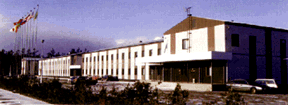
Coordinating Director, Chornobyl Center:
Valery Glygalo
26 Lesya Ukrainka Blvd.
Kyiv 252133, Ukraine
Phone/Fax: (380-44) 294-4379
Director, Slavutych Laboratory of International Research and Technology: Anatoly Nosovsky
7/1, Gvardeyskaya Diviziya str.
Slavutych, Kyiv Region
Phone/Fax: (04479) 2-30-16
For more than a decade, the world community has worked to assess the long-term effects of the 1986 disaster at Chornobyl and deal with its economic, environmental, and health impacts. To focus these efforts, Ukraine established the Chornobyl Center for Nuclear Safety, Radioactive Waste and Radioecology. Ukrainian President Leonid Kuchma created the Center in 1996. The Center's primary technical branch, the Slavutych Laboratory for International Research and Technology, is 40 km northeast of the Chornobyl Nuclear Power Plant, in the city of Slavutych. Administrative offices are in Kyiv.
Objectives
Specialists at the Chornobyl Center are working with international agencies on joint projects in nuclear safety. The Center was established with the following objectives:
-
Provide a means to address environmental and health issues for areas affected by the Chornobyl accident
-
Help to mitigate the socioeconomic impacts associated with the closure of the Chornobyl plant.
-
Develop sustainable operational safety programs that support Ukrainian nuclear power plants
-
Help develop and maintain in-country expertise in the nuclear sciences.
- Address shutdown and deactivation, spent fuel, and waste management issues at Chornobyl and elsewhere in the Ukraine.
Establishment of the Center is a milestone in Ukraine's effort to build in-country expertise in safe nuclear power plant operations. Employment fostered by the Center is expected to reduce the socioeconomic impacts of the Chornobyl plant's permanent shutdown in the year 2000.
Multi-National Effort
International experts collaborate with Center specialists on nuclear safety analyses and projects. This cooperation accelerates Ukraine's dissemination and use of internationally accepted nuclear safety practices. Meanwhile, research at Chornobyl is advancing international experts' understanding of environmental management, enabling them to create improved technologies for use in Ukraine and elsewhere in the world.
The United States
The United States has worked with Ukraine to develop the Chornobyl Center's
infrastructure. U.S. and Ukrainian technicians installed a satellite-based communications
system at the Center's Slavutych facilities in 1996. Through that link, the
Center has gained reliable telephone and data access to the rest of the world,
along with videoconferencing capability. In November 1997, the Center's staff
moved into a newly renovated building that includes computer stations, offices,
classrooms, and conference rooms. The United States supplied office equipment
and computer hardware and software. U.S. experts have provided train-
ing for the Center's managers and are working with them to establish effective
management systems.
U.S. and Ukrainian specialists completed three joint technical projects in nuclear safety in 1997: 1) a risk analysis of hazards posed by the Unit 4 shelter to the operational Unit 3 reactor, 2) an assessment of computer modeling needs for work at the shelter, and 3) an assessment of robotics technology needs. More projects are under way. These include nuclear data acquisition and evaluation, an assessment of Ukraine's spent fuel management needs, and planning and analysis work for the shutdown and deactivation of the Chornobyl plant. The Pacific Northwest National Laboratory coordinates these efforts on behalf of the U.S. Department of Energy.
France and Germany
France and Germany have committed funds to support nuclear safety work in Ukraine. French and German specialists are working with Center personnel to compile a database on the safety status of the Chornobyl Shelter. The team also will study the ecological effects of the accident and its health effects on cleanup workers and the general public. Experts from Russia and Belarus will participate in the studies. A joint venture (called RISKAUDIT) of France's Institute de Protection et de Surete Nucleaire and Germany's Gesellschaft fur Anlangen und Reacktorsicherheit mbH is undertaking the work.
Great Britain
In October 1997, Great Britain signed a memorandum of understanding with Ukraine to support further development of the Center and to conduct joint technical projects. Discussions are under way to establish a scientific project agenda and communications program. The British Department of Trade and Industry coordinates work with the Center.
Italy
Italy intends to support joint technical projects, which will include modeling of contaminated aquatic systems; study of the public radiation exposure from the 1986 accident; studies of risk and exposure indicators, DNA radiation damage mechanisms and post-accident thyroid problems in children; and training on nuclear waste characterization. Italy's National Agency for New Technology, Energy, and Environment coordinates Italy's work with the Center.
Other Countries
Japan and Canada are discussing joint technical projects with the Center. Center
Management Dr. Valery N. Glygalo directs the Chornobyl Center, under appointment
from the Ukrainian president. Mr. Anatoly V. Nosovsky, Dr. Glygalo's deputy,
is director of the Slavutych Laboratory. A board of supervisors, composed of
representatives of Ukrainian agencies, provides guidance.
| | Contents | Foreword | Program Overview | Armenia | Bulgaria | Czech Republic | Hungary | Kazakhstan | Lithuania | Russia | Slovakia | Ukraine | Appendix A | Appendix B | Appendix C | Contacts | |